Ground Nesting Birds
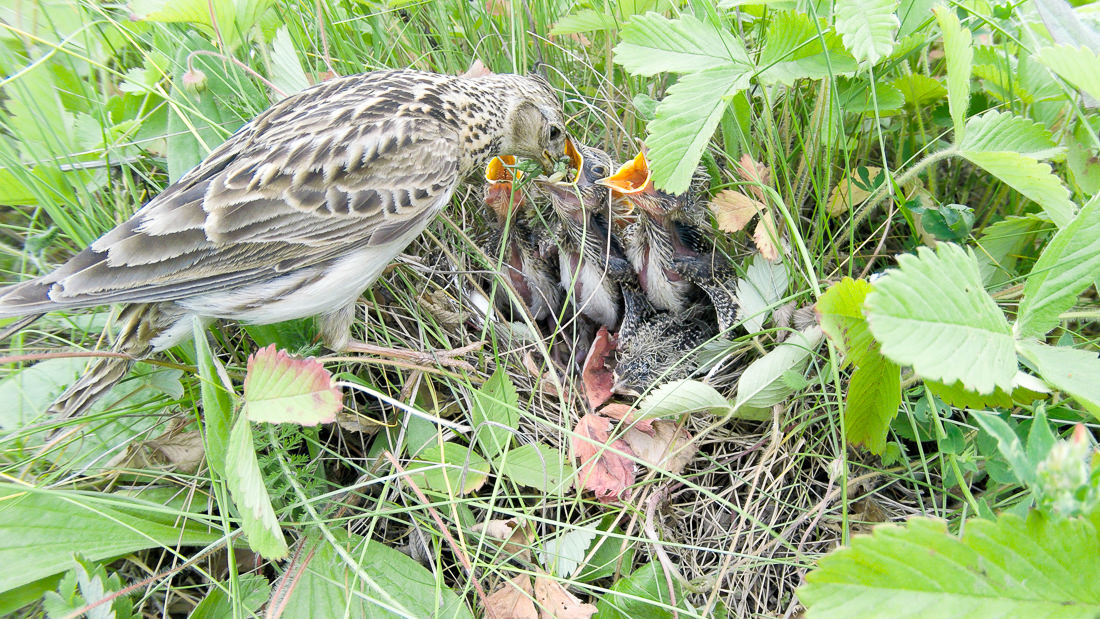
In an earlier article, we looked at nesting behaviour in wild birds and how you could use this knowledge to encourage birds to nest in your garden. In that article we talked about birds that nest in trees, hedges, bushes, and cavities in trees or walls.
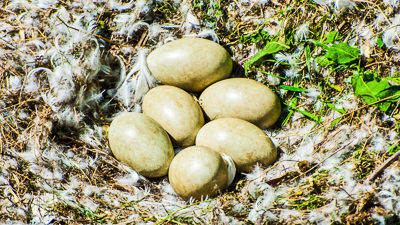
But there are birds that nest in far more precarious locations which you would think would expose them to a far greater risk of predation. We’re talking, of course, about ground nesting birds – those that build their nests among the vegetation of the UK’s wilder places – and in this article we’re going to take a look at which species do this and why.
Which birds nest on the ground?
There are quite a number of birds that choose the ground as their home, and they cover a number of different groups. For example, many coastal seabirds like to nest in sandbanks above a beach. Waders will often move to the uplands to breed, where they nest, camouflaged among the heather, hoping to avoid the attention of predators. Various farmland birds also nest on the ground, as do some raptors.
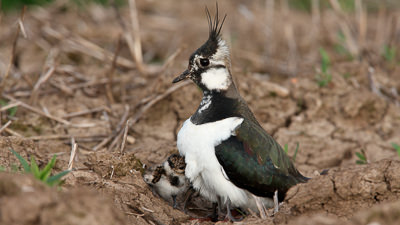
Northern lapwing
Well known ground nesters include the Curlew, Lapwing, Skylark, Nightjar, and Hen Harrier.
Waterfowl species such as Mallards and other ducks also nest on the ground, making their nests close to, but not on, the water’s edge. The same is true of Swans, who either build their nests on land but close to water, or in secluded reeds beds where predators would struggle to reach them.
Finally, many species of bird classed as game birds in the UK, including Pheasants, Grey and French Partridges, Black and Red Grouse and Capercaillie, are ground nesters, making their nests in shallow holes surrounded by vegetation for protection.
Why do some birds nest on the ground?
This is an interesting question. After all, there is one big flaw in this strategy which is obvious to see – predation. All predators and scavengers love eggs because they are rich in protein, fat and calories, and when discovered, they don’t fight back. As a result, Badgers, Foxes, Pine Martins, Stoats, Weasels, Rats, Adders, and domestic cats all covet these tasty treats and will devour a whole brood if they find them.
The same is the case for young chicks. If they’re discovered by a predator, they will become its next meal.
So, if nesting on the ground is so dangerous, why do some birds do it?
One of the main reasons why some birds evolved to nest on the ground is due to their environment. They simply evolved in areas where there were few or no trees. In which case, they had no choice but to make their homes elsewhere. This is often the case with coastal birds – fewer trees near to beaches meant the birds had to adopt other strategies for building nests, with many such as the Ringed Plover choosing the safety of grassy sand dunes as a safe place to raise chicks.
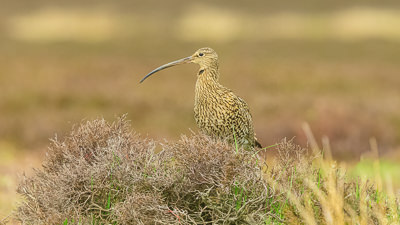
Adult Curlew on moorland in Yorkshire, England
The uplands too, such as the UK’s beautiful heather moorland, lack trees, so birds such as the Curlew and Lapwing instead nestle down among the heather and lay their eggs there.
Another reason some birds nest on the ground is because they’re not great at flying. For example, wild Turkeys in America fall into this category. They are big birds that don’t fly any great distance and getting up into the higher branches of a tree is beyond them. In the UK, Guinea Fowl are the same. Although they are certainly capable of flying, they are large birds that only do so for relatively short distances. They make their nests among fallen branches and tall grasses to hide from predators.
Many species of waterfowl nest on the ground because their young are active from an extremely early age. Cygnets, ducklings, and gosling, for example, can swim almost immediately after hatching, meaning they can take to the water where terrestrial predators cannot reach them. This takes away much of the advantages of nesting high up in trees.

Of course, this doesn’t stop predators finding and eating the eggs of waterfowl, although the hen bird is likely to defend her brood very aggressively. The young could also be vulnerable to other predators such as pike or mink which are now common in many waterways. But the advantage of taking to the water shortly after hatching clearly outweighs the risks.
Finally, some birds nest on the ground simply because it offers an advantage over trees and hedges. Thick vegetation can be difficult for even the hungriest predator to penetrate so will keep eggs and young chicks safe. And let’s not forget that not all predators are ground-dwelling. Nests on the ground covered by dense vegetation make for the perfect protection against aerial predators such as raptors, which can also take young chicks.
Defence Against Predation
As we’ve identified, predation is a serious issue for ground nesting birds. So, what can they do to protect against this?
The first and most obvious solution is camouflage. Many ground nesting birds blend into their environment so completely that they are simply missed by predators. You can see this in species such as the Woodcock, Woodlark, and Nightjar, which are almost indeterminable from the leaves they surround themselves with on the forest floor.
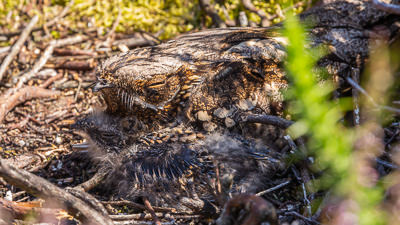
A Nightjar mother snuggled up to chick
Other species use the natural topography of the landscape and the shape of their nests to hide themselves from predators. The Lapwing is an expert at this. It uses natural hollows in the ground and shapes them around its eggs to keep them concealed. By doing this, a predator is unable to see the nest unless it stumbles directly across it.
Other ground nesting birds keep their eggs and chick safe by building nests that are very difficult to access. Swans are a classic example of this, constructing large nests in reed beds where land mammals such as foxes and badgers could not reach.
As well as camouflage and building nests in difficult to reach areas, some birds also exhibit behavioural defences against predators if flushed from the nest. Waders and plovers, for example, may feign a broken wing in an attempt to draw a predator away from a nest of eggs or young chicks. This fascinating behaviour, which can put her in grave danger, is called a distraction display and is an extremely effective way of protecting young.
Ground Nesting Birds and Humans
Although they don’t mean to be, one of the biggest threats to ground nesting birds can be humans and dogs. During the nesting season, carelessly walking in areas where ground nesting birds are, or having a dog running free off the lead, can cause female birds to abandon the nest, leading to the loss of the brood.
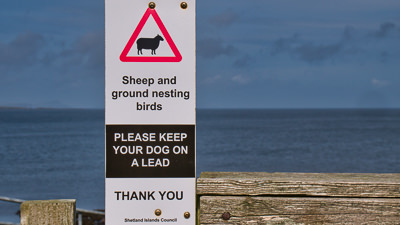
To avoid this, people walking in areas where ground nesting birds are should stick to footpaths during the months of March to August, as this is when nesting takes place, and keep dogs on leads.
We all need to do our bit to protect these wonderful and fascinating species and the easiest way to do that is to ensure their habitat is undisturbed and they are allowed to get on with having and rearing young with minimal stress and interference.
Our recent posts giving advice and guidance on wild birds
Ground Nesting Birds
Ground Nesting Birds In an earlier article, we looked at nesting behaviour in wild birds and how you could use this knowledge to encourage birds to nest in your garden. In that article we talked about birds that nest in [...]
Incredible Journeys – Bird Migration Explained
Reading Time: 11 minutes While many species of bird make the UK their home all year round, some just visit for the summer or winter months and then head off to distance shores for the rest of the year. In this blog, we examine bird migration, taking a deep look into one of nature’s most spectacular phenomena to find out more about what makes it possible.
A Guide to Greenfinches
Reading Time: 9 minutes Greenfinches might not have the range of colours of their Goldfinch cousins, but they are still have a spectacular plummage. They are also viewed as one of the best starter birds you can buy by many aviary keepers because they tend to be fairly hardy, have a good song, and don’t have any specific needs that require the management of an experienced keeper.








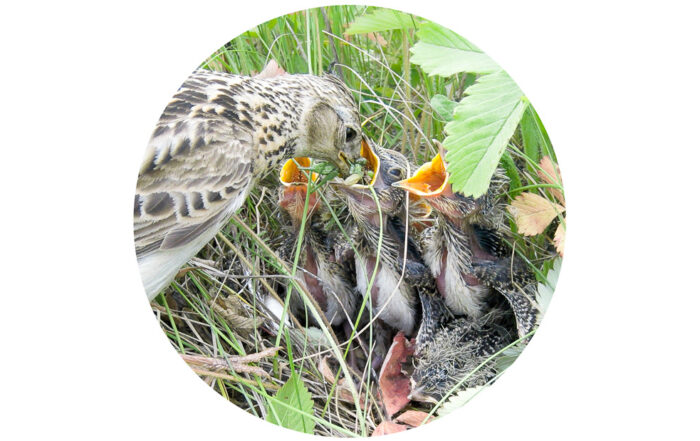

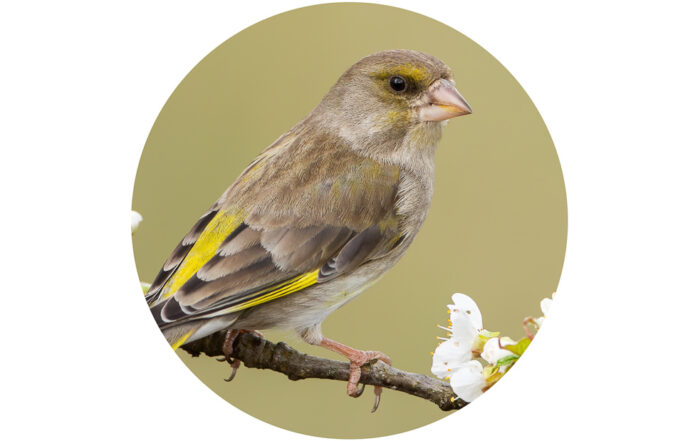
Leave A Comment